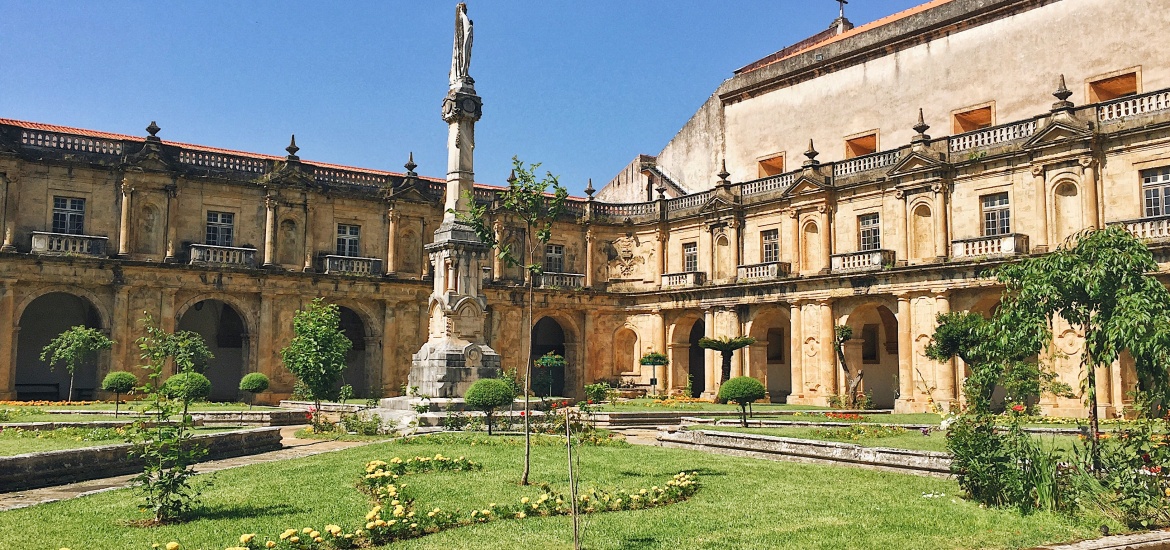Coimbra is famous as a university town, but the city is so much more than the university. The history and culture in Coimbra is fascinating, and I wish I spent a little more time in this city!
Since much of the population is young & in their 20s, Coimbra has a very youthful vibe. Because it is the middle of July, however, the university town has been relieved of their students for the summer—thus becoming a bit quieter.
Coimbra, the historical capital of Portugal
After arriving at Coimbra, I immediately made my way to the hostel to drop off my luggage. Little did I know that I would make a great climb to get there! From Coimbra station, the hostel was only 15 minutes away by foot. However, because it was located in the centre of Coimbra, I had to climb many steps to get there. I literally had to carry my heavy luggage up rocky pavement!
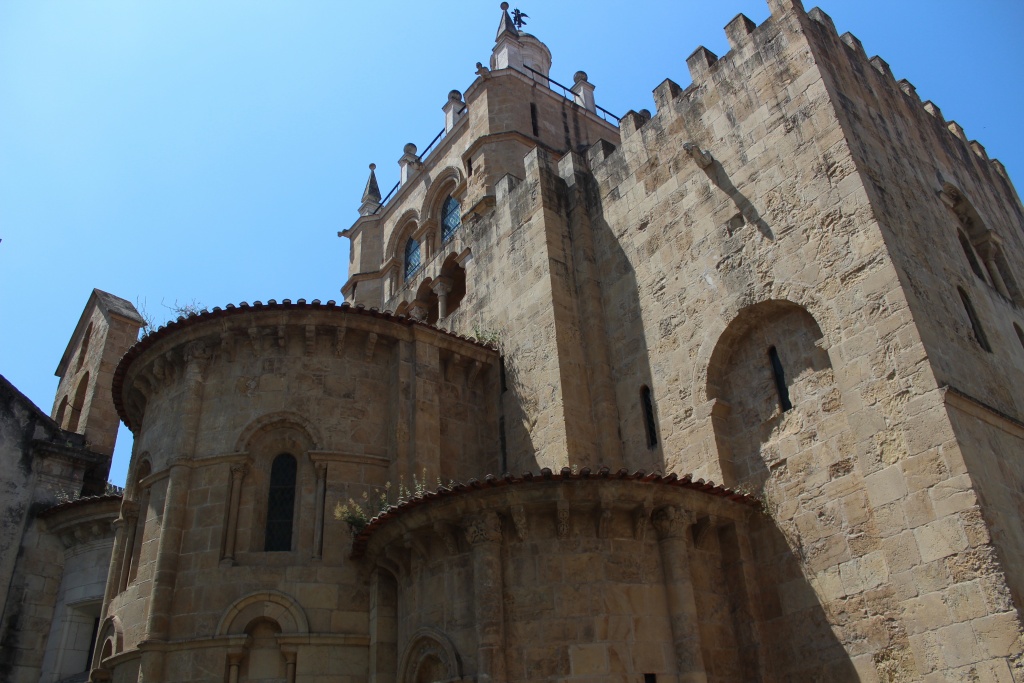
Serenata Hostel was located right beside Sé Velha de Coimbra or the Old Cathedral of Coimbra. I was surprised by how fancy my hostel looked, despite such a cheap price! For one night, I paid €19 and my room was amazing! It even had gorgeous views across Coimbra!
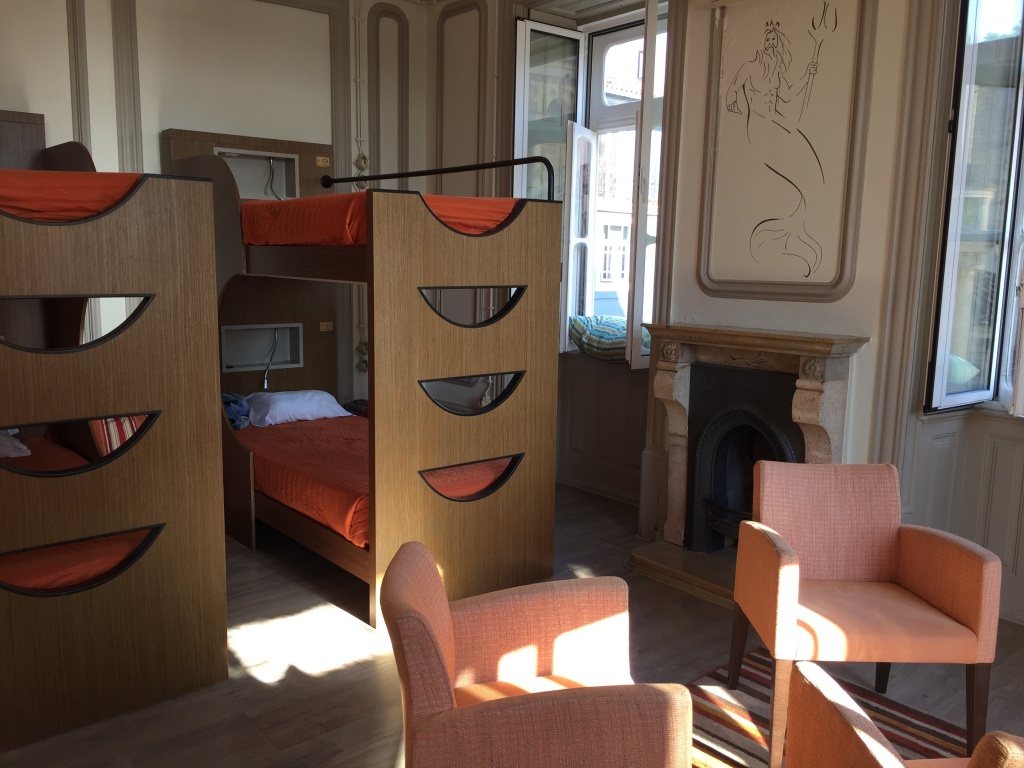
I dropped off my luggage and ventured out to the centre of Coimbran society, the (in)famous University of Coimbra!
University of Coimbra
The University of Coimbra is the oldest university in Portugal, and one of the oldest in Europe. During the time when Coimbra was the capital of Portugal, many of the buildings and monuments in the university were used by the royalty. The Paço das Escolas where I ended up was one such relic of the past.


The Paço das Escolas is surrounded by many gorgeous buildings including the University Tower, Royal Palace, and the Chapel of St. Michael. As much as I wanted to see the inside of these buildings, I was strapped for time in Coimbra and I skipped it. However, you can buy tickets to see the buildings for €10 – €12.
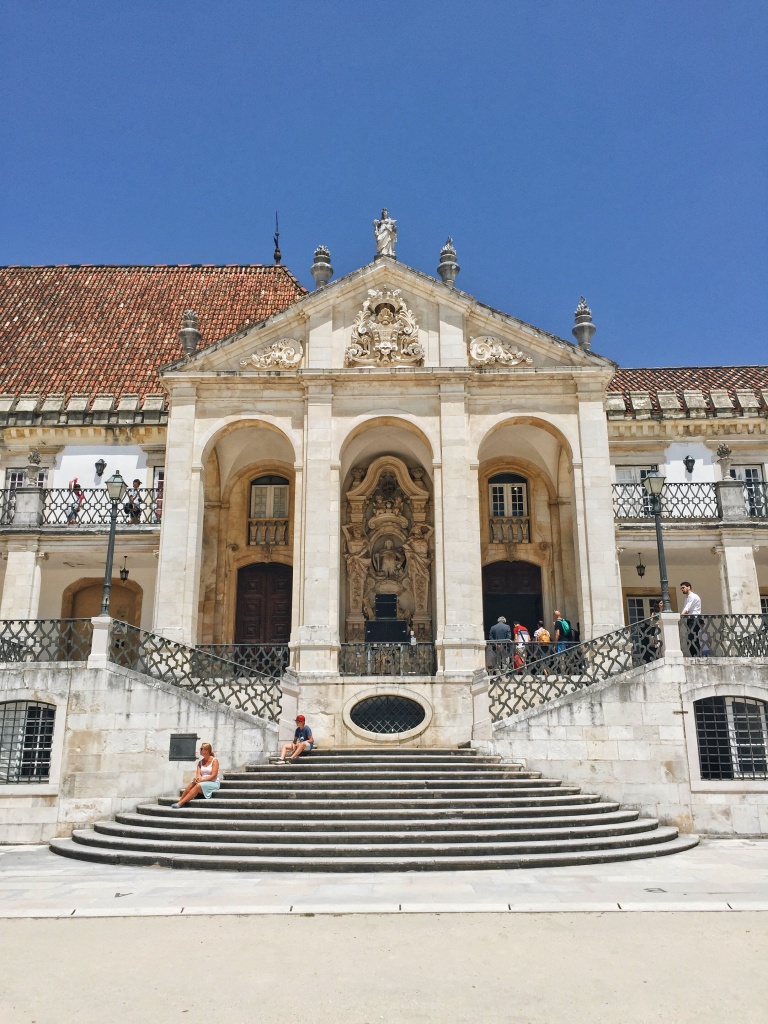
The crowning jewel of the Paço das Escolas (and of University of Coimbra, by extension) is the Biblioteca Joanina or Joanina Library! The library is a Baroque library from the 1700s, with three floors of books and painted wood & ceilings.
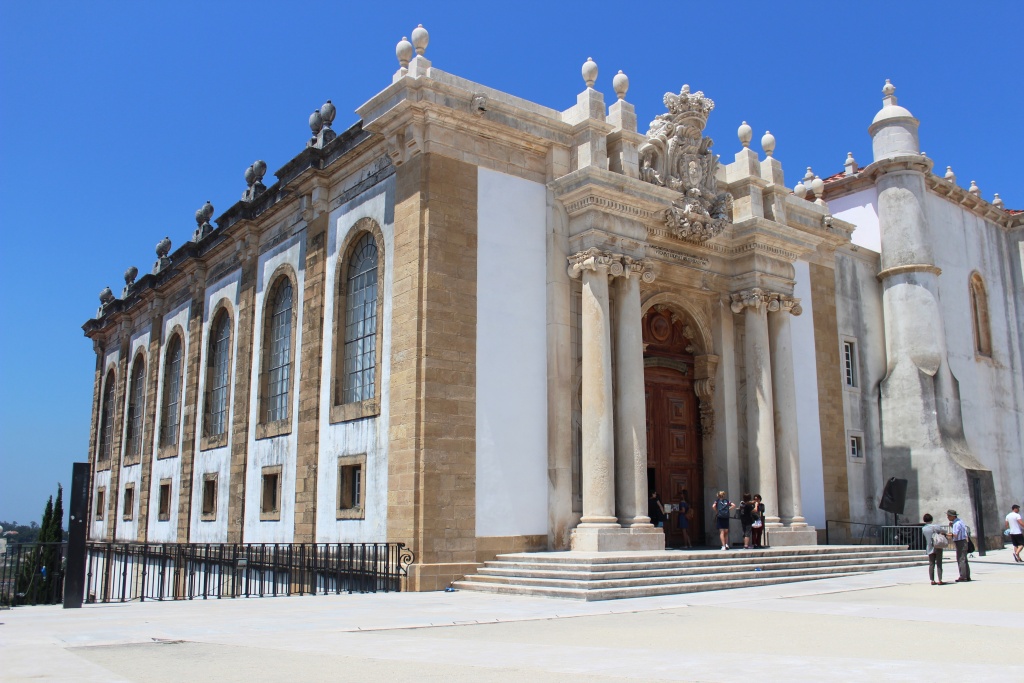
Exploring Coimbra
Under the heat of the summer sun, it can be quite unbearable outside. In search of refuge and late lunch, I walked down to look for food and shade. I found a restaurant called Dom Espeto with a lunch daily special (aka menu do dia) of 3 courses for €7.50, with wine! A definitely good deal!

The meal included a simple soup with bread, a main course and a dessert. My main course was arroz de feijão or beans & rice, with a side of petingas fritas or fried small sardines (if you want). A simple but very filling meal.
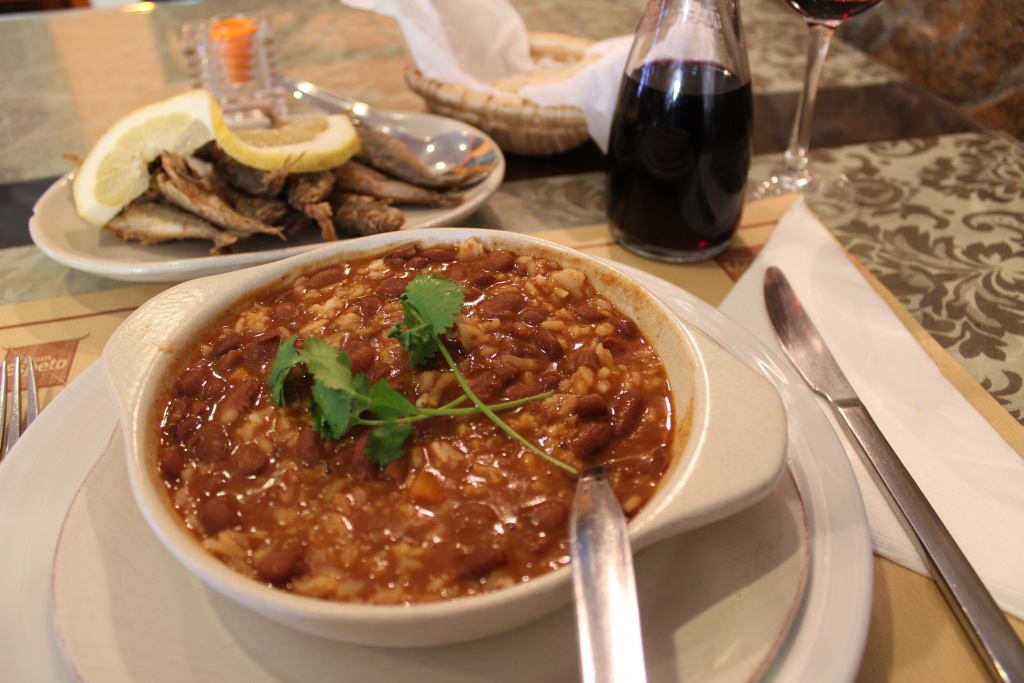
Lunch climaxed with chocolate mousse, which was creamy and delicious. And, as most Portuguese do, I ended the meal with a cafe (espresso).
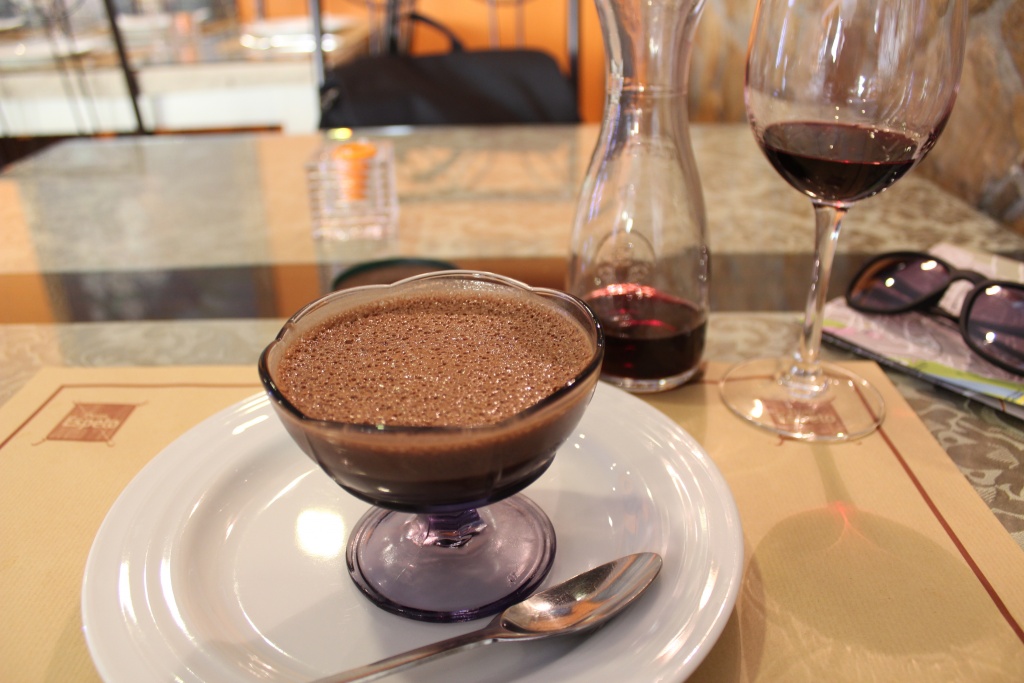
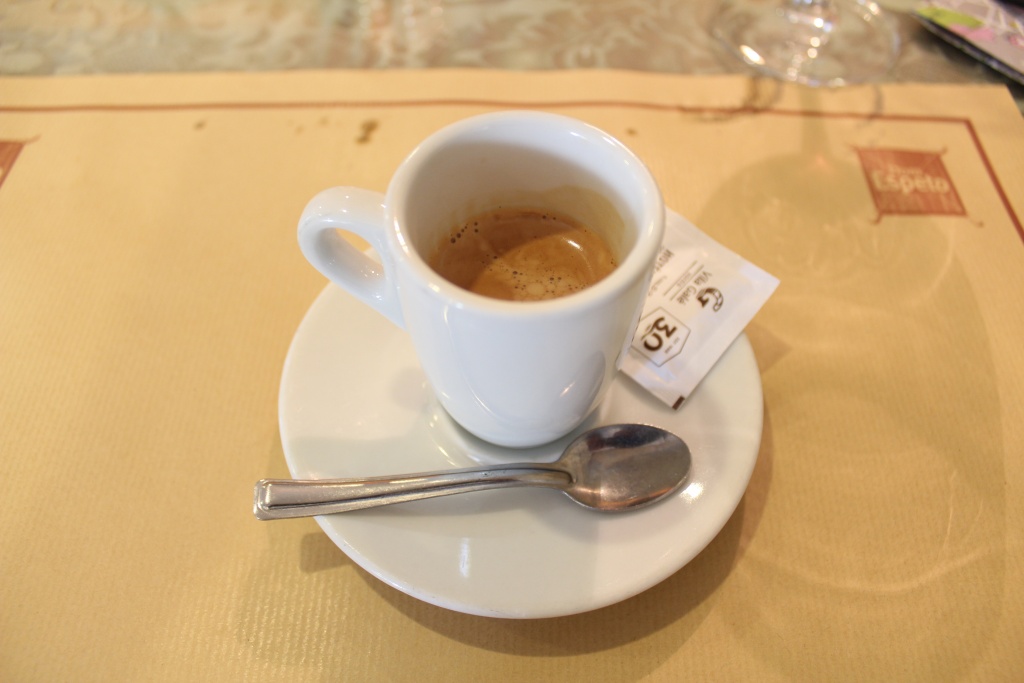
After my meal, I went straight to one of the main attractions to Coimbra: the Mosteiro de Santa Clara or Santa Clara Monastery. It was mid-afternoon, and I chose to walk to burn off my lunch (which I would regret later). I input the destination in Google Maps and off I went.
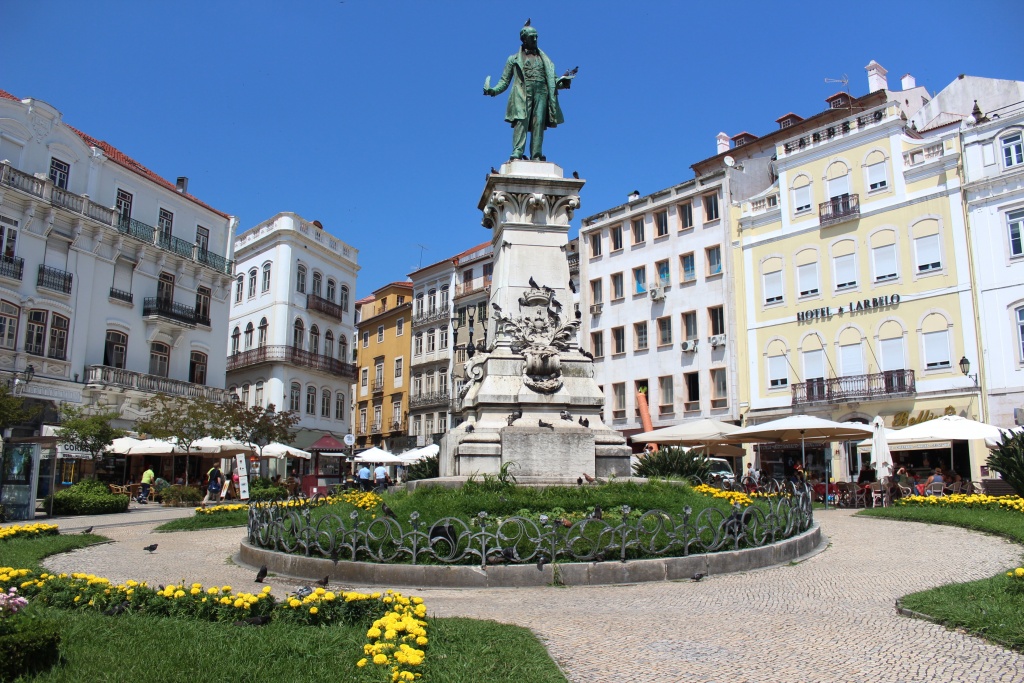
On my way, I passed a gorgeous view of Coimbra from across the river. Because the monastery is across the Mondego River, you’ll see a beautiful panorama of Coimbra!

Mosteiro de Santa Clara-a-Nova
The Mosteiro de Santa Clara-a-Nova or New Santa Clara Monastery is situated on top of the hill across the river, and it is easily recognized atop. The walk to the monastery wasn’t super difficult, and the view from the top is quite panoramic!


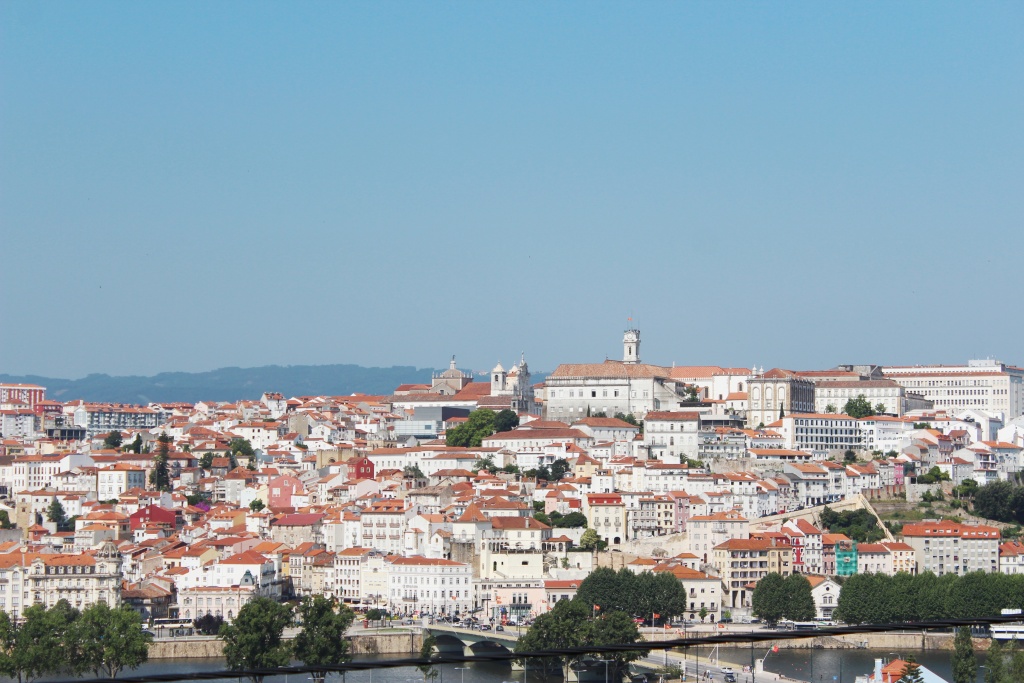
The entrance to the monastery was €10, which included entrance to the inner cloister, the courtyard, the chapel and the small museum. The chapel was beautiful, with an intricately-decorated ceiling and gold-plated interior! In the middle of the altar is the enshrined tomb of Queen Elizabeth of Portugal, the queen consort.
In her time, she was a devout Catholic, and she even retired to the Monastery when her husband (the King Denis) died. She was canonized, and her body was transferred to this monastery.

Photography wasn’t allowed in the cloister or the museum, but in my opinion, it wasn’t even worth taking photos. By far, my favourite part in the monastery was the beautiful courtyard.
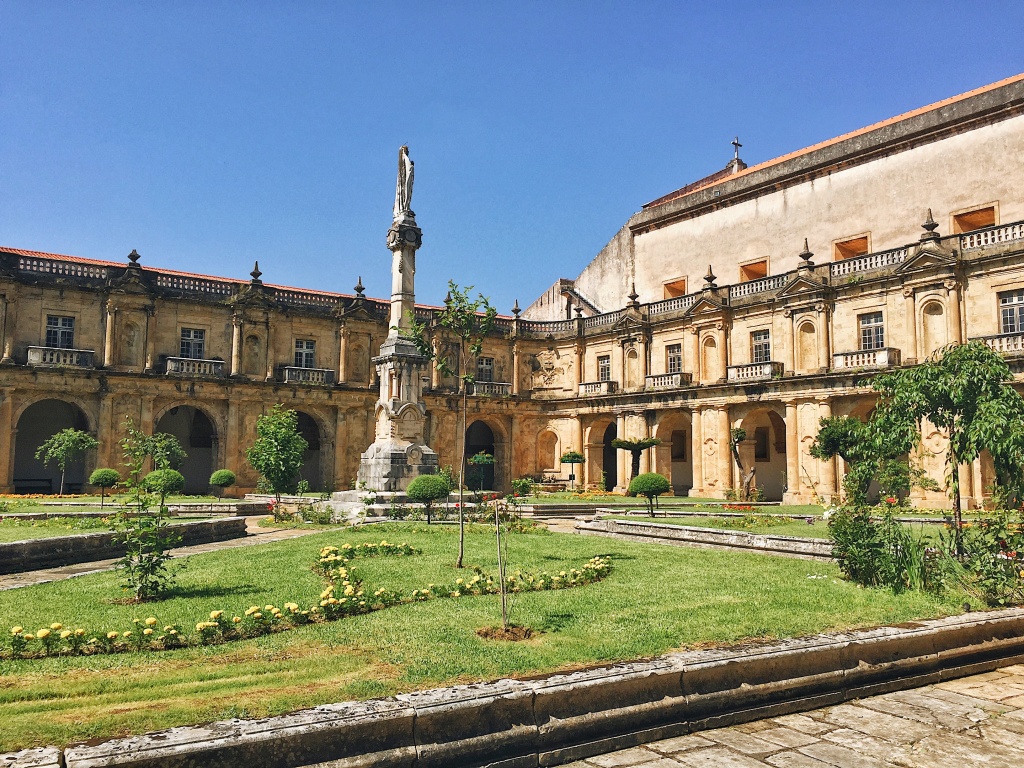

Courtyard
In the centre of the courtyard is a statue of Santa Clara looking down. As you walk around the perimeter of the courtyard, you pass corridors filled with beautiful archways. It was eerily quiet and empty, but that just adds atmosphere and peace in a city of busyness.
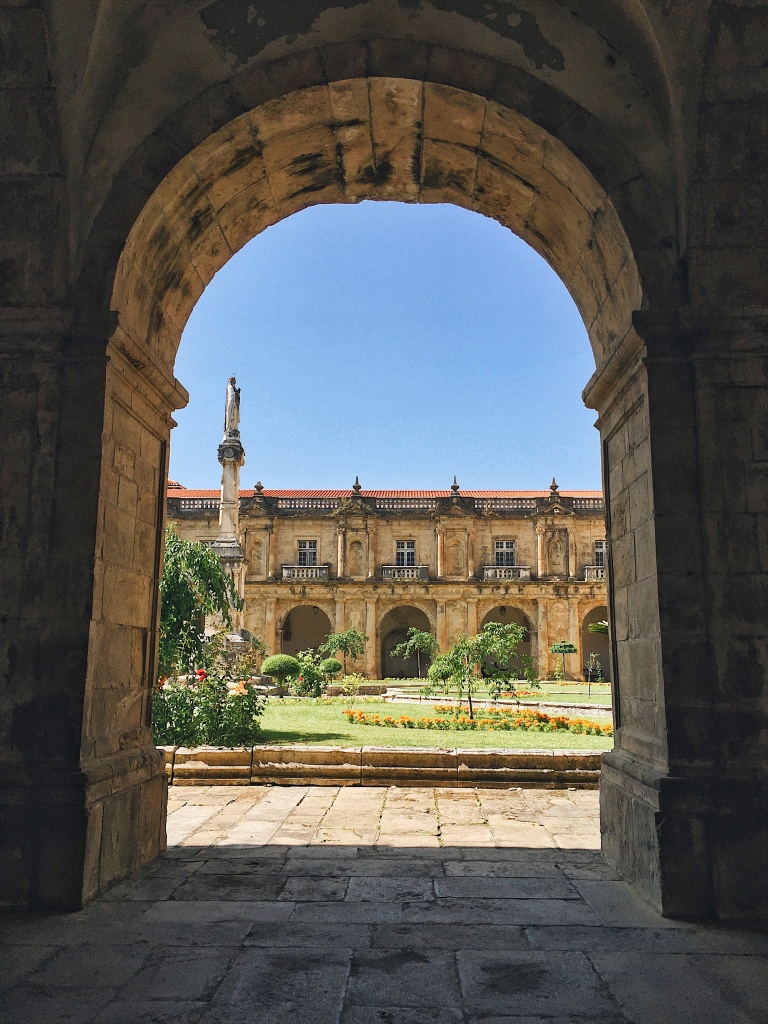
I sat on a bench, listening to the peaceful music being played in the background, and shut my eyes for a while. I can imagine the nuns doing their daily devotion as they walk around the courtyard. It was an oasis fit for isolation. Geek moment! For anyone who has played Uncharted 2 on PS3, doesn’t this courtyard look similar??
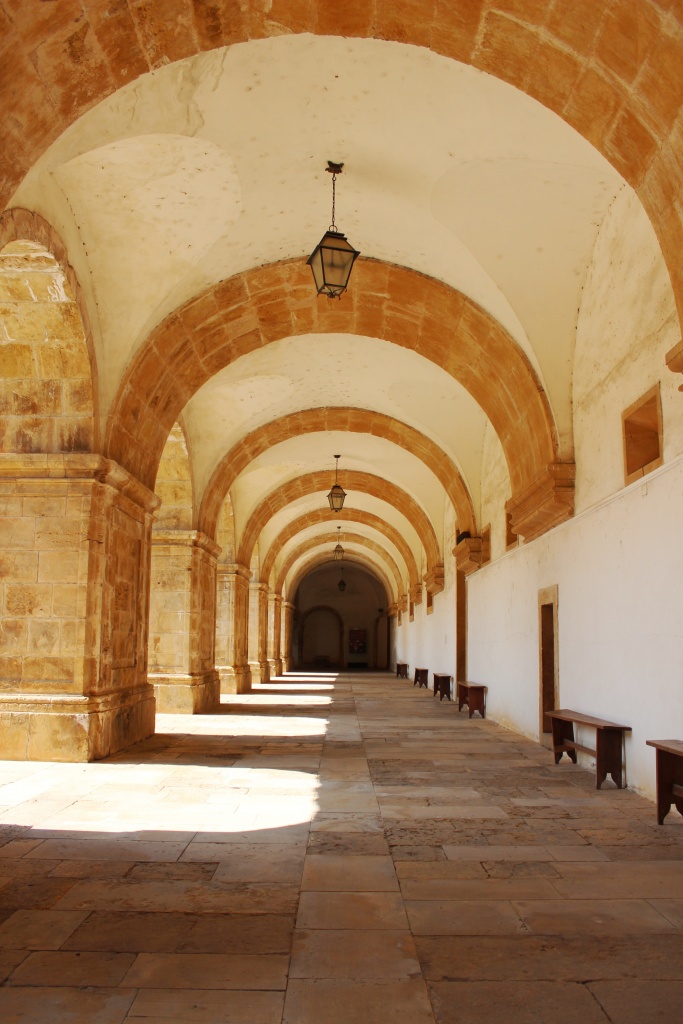
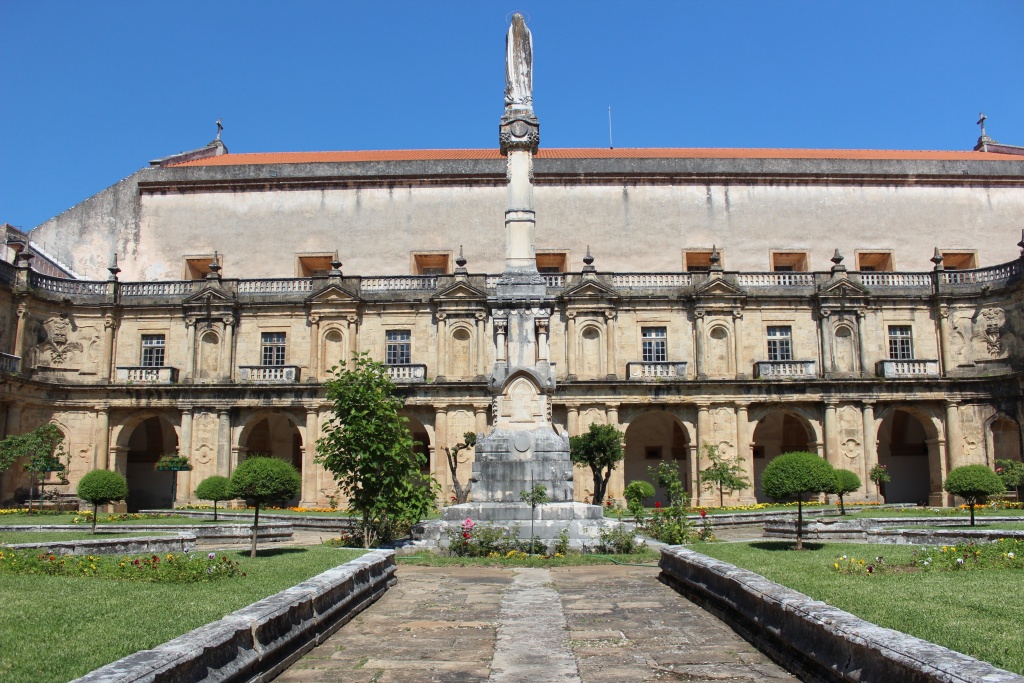
After resting at the monastery for a bit, I made my way back to the historical centre. Then, I realized that I went to the wrong monastery! The more famous monastery was the Mosteiro de Santa Clara-a-Velha or Old Monastery of Santa Clara. Unfortunately, I was too late to enter. At least I got to see it though on the way back!
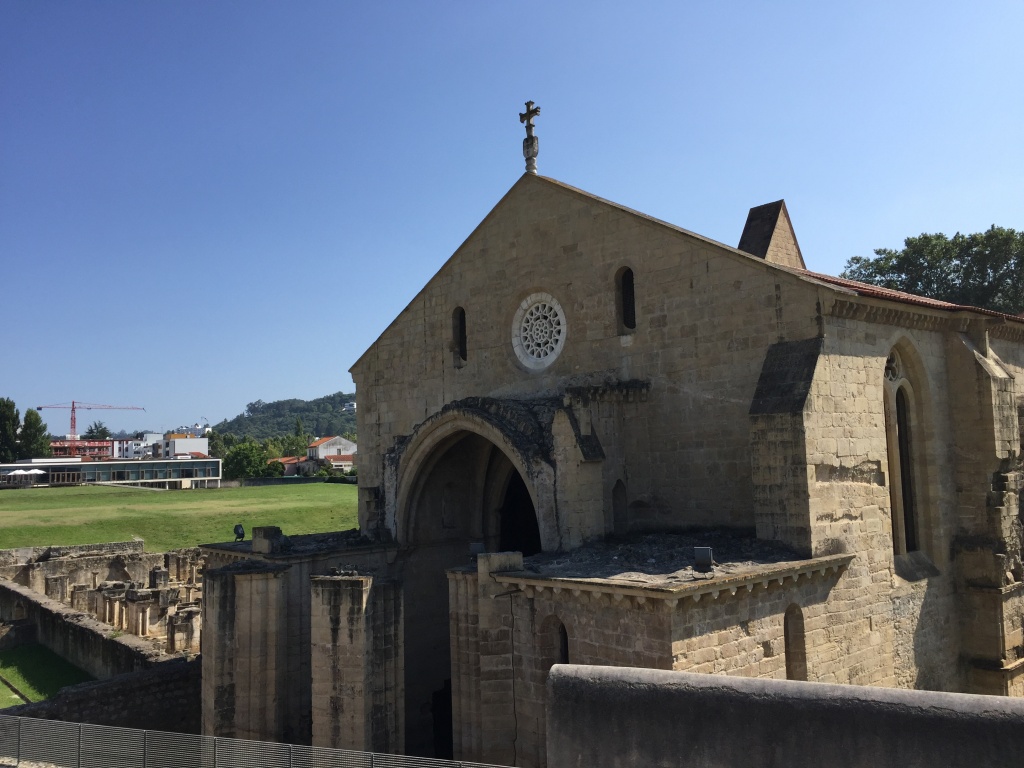
Coimbra fado
This evening, I also visited a fado house near my hostel called Fado Hilário. The show was at 6:45pm, and the ticket for the show & a drink was only €10 (for an hour show). Since I haven’t been to a fado show, this is an opportune time to experience it!

The show opened with one of the players introducing the history of fado, and of Coimbra fado. Fado is a Portuguese genre of music that is characterized by the feeling of loss/nostalgia that the Portuguese call saudade.
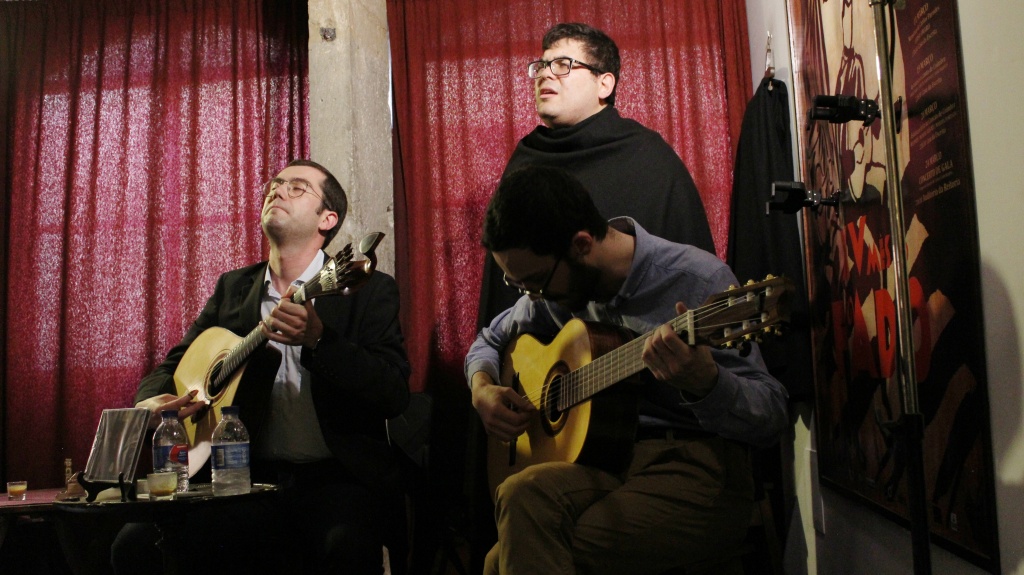
Lisbon may have originated fado, but Coimbra has an equally powerful sound. It’s more historically linked to serenading in the evening below the balcony of a woman. However, it has become an instrument of resistance. Here’s a sample of Coimbra fado below.
The show then ends with an interactive session, where the audience sings part of a song along with the singer. The song we sang is the song that graduating students would sing, thus having an emotional feeling of loss & nostalgia (saudade).
A peaceful evening in Coimbra
After the fado show, I went back down by the river to view Coimbra in the glow of the sunset. I passed by the Igreja de Santa Cruz, which was the final resting place of Portugal’s first king, Afonso Henriques.
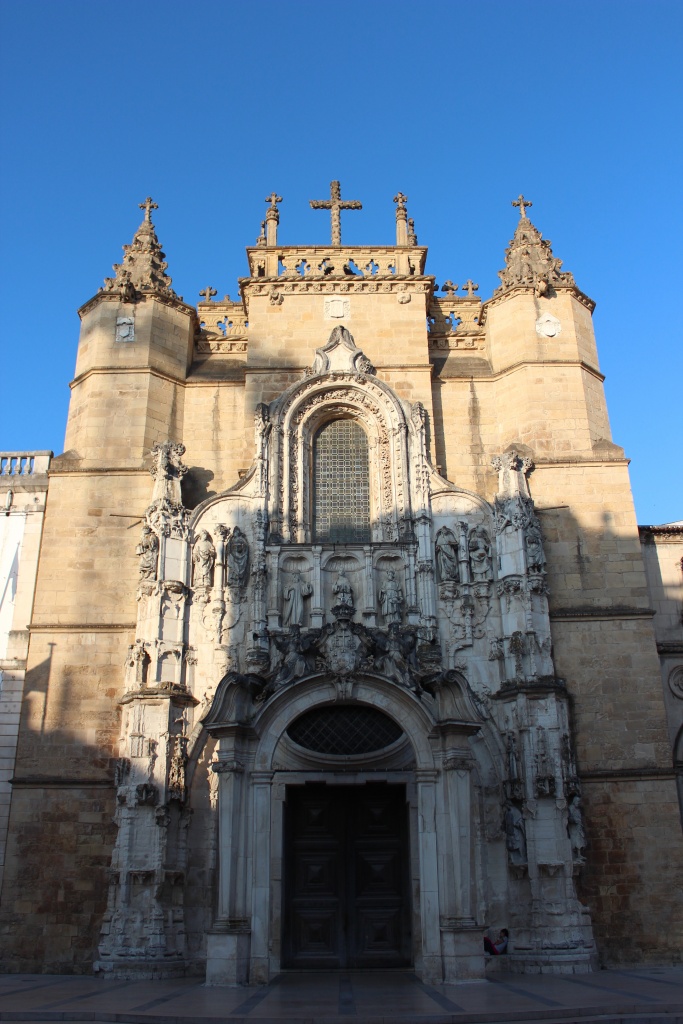
The sunset from across the river is beautiful! This is totally a postcard-worthy photo!
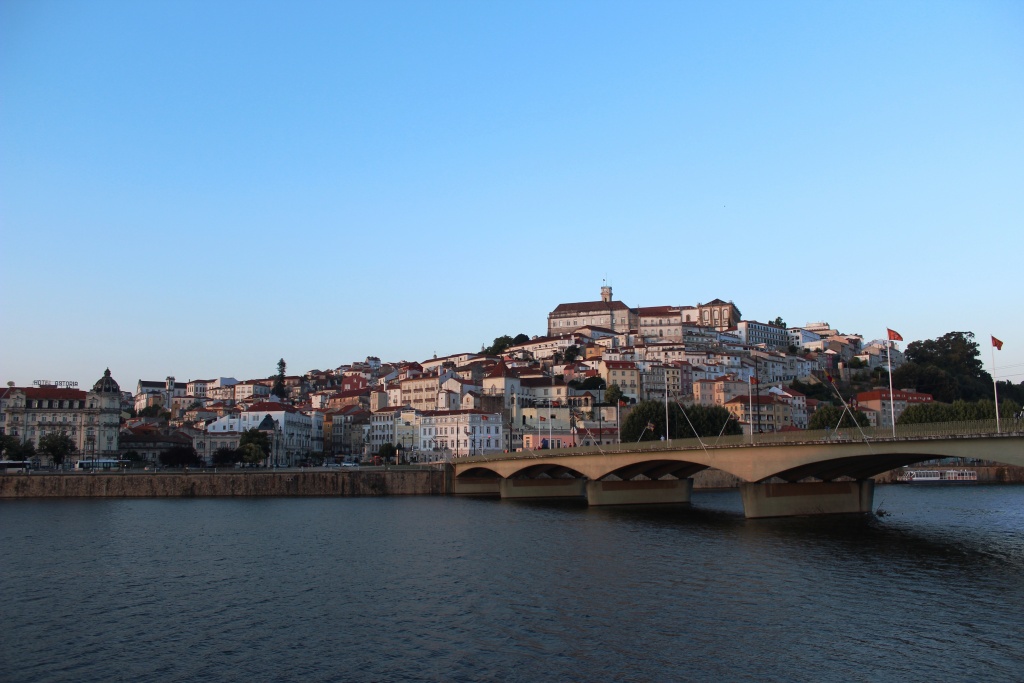

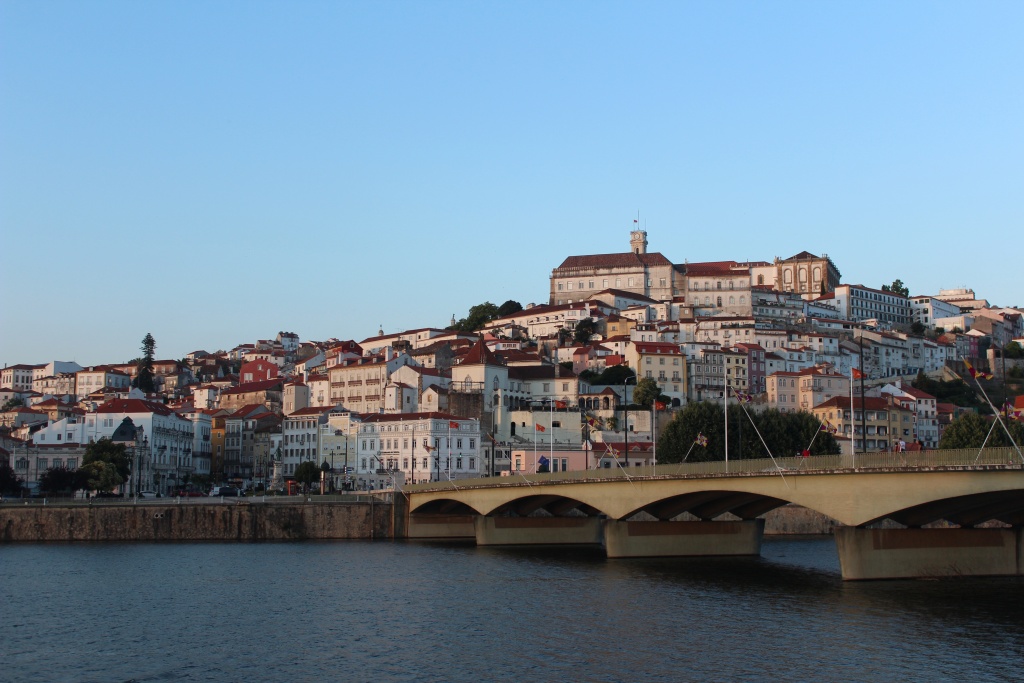
With a beautiful end to my day trip, I happily went walked back to the hostel, and met some amazing people in my room! I met a lawyer from Brazil, and a teacher from Ireland!
For the rest of my evening, I just finished a blog post and enjoyed the night scene from my hostel. It was a very good day in Coimbra!
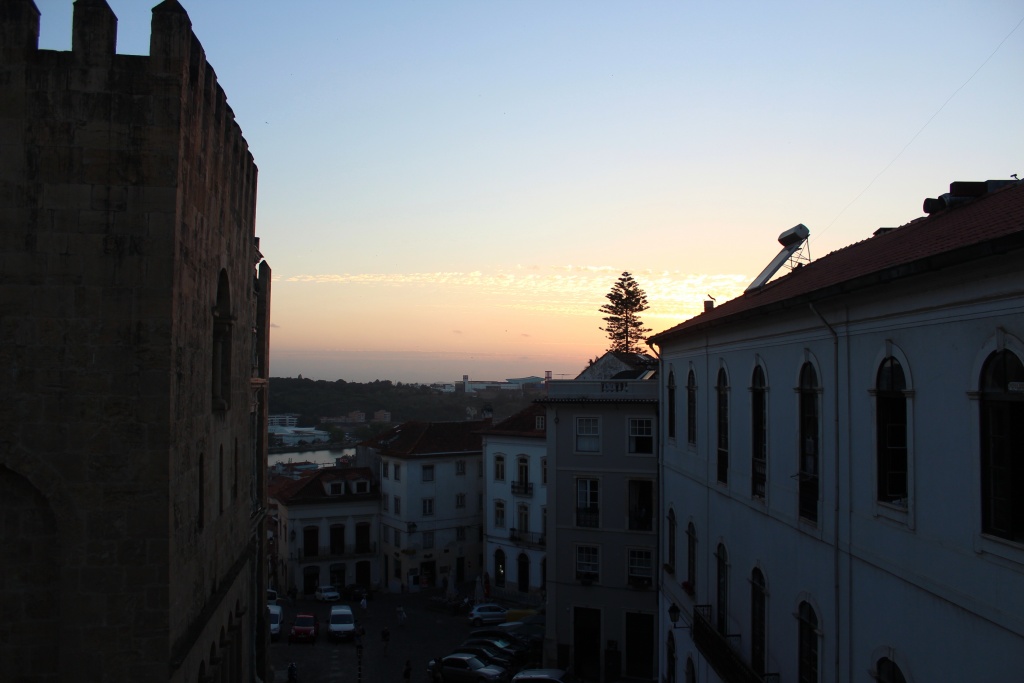
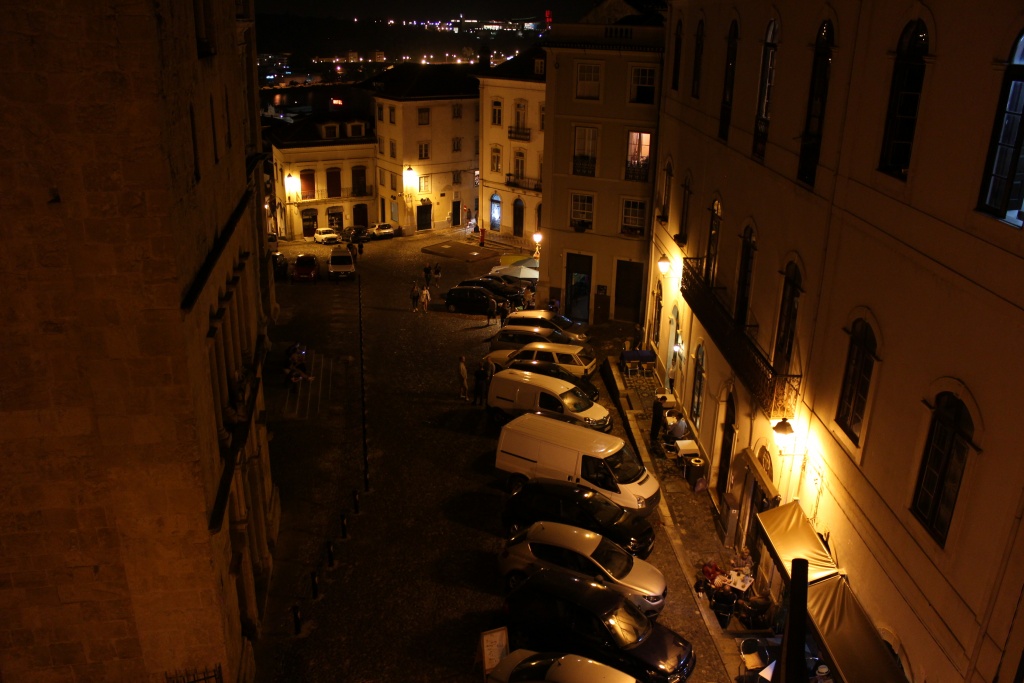
Tips
The historical centre is steep!
When I booked my hostel, I didn’t know that it was located in the historical centre of Coimbra.
The historical centre of Coimbra is located on the hill that you see, and there are a lot of steps to get there! The closer you are to Biblioteca Joanina, the higher you are up on the hill.
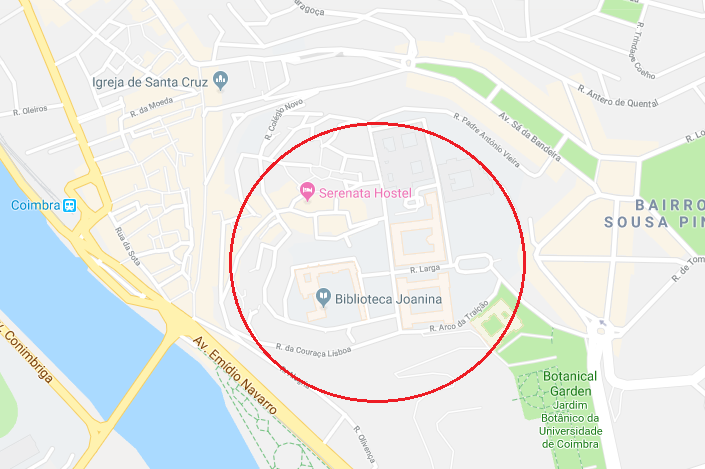
Be careful when the ground is wet!
Much of the sidewalk in historical cities in Portugal are made of stone, and over time, the stones have become polished by its daily wear & tear. Because of this, they can be very dangerous when it is wet as they become slippery!
I slipped on a staircase once, and it was a good thing that I broke my fall. A slip like this can be devastating to more vulnerable people, so be careful!
Visiting the Mosteiro de Santa Clara
If you want to visit the Santa Clara Monastery, be careful which one you go to! There is the old, more famous monastery (Mosteiro de Santa Clara-a-Velha), and the new, less famous monastery (Mosteiro de Santa Clara-a-Nova).
I wanted to visit the old monastery, but I accidentally visited the newer one instead. Don’t make the same mistake I did!

